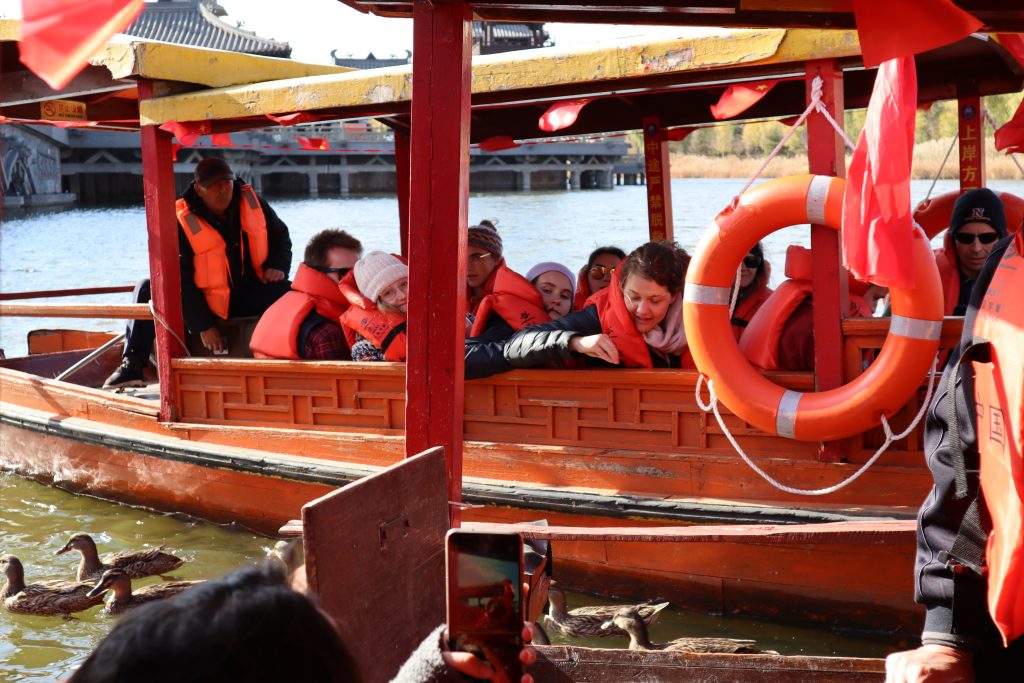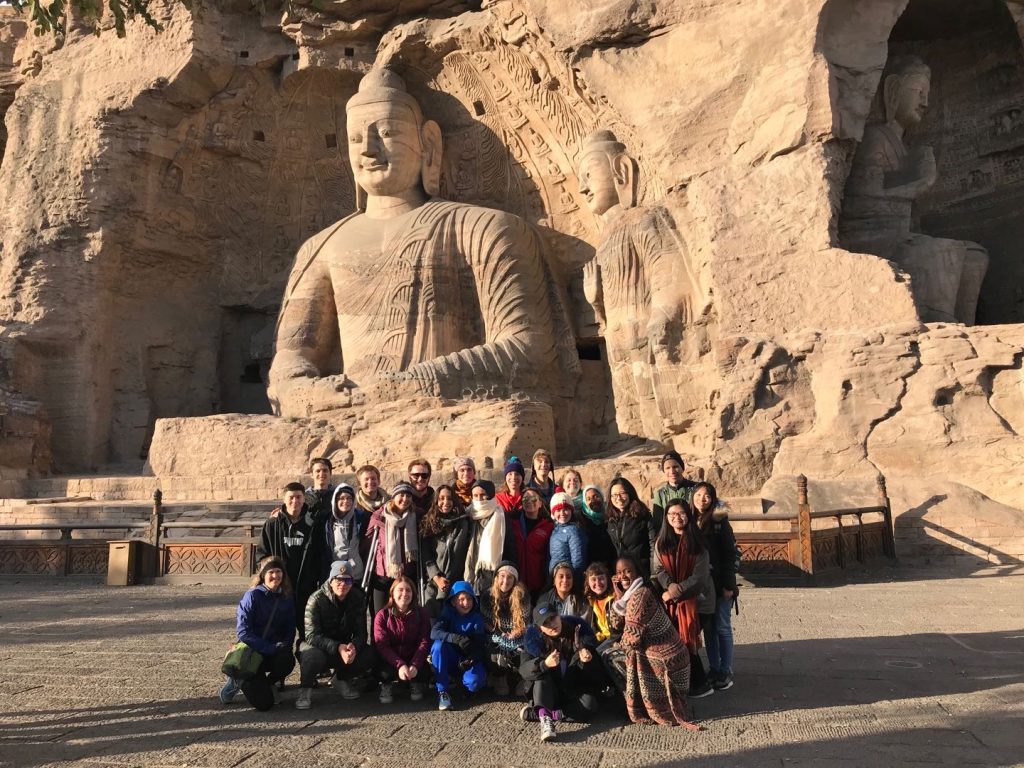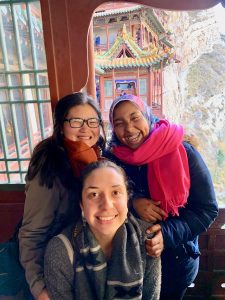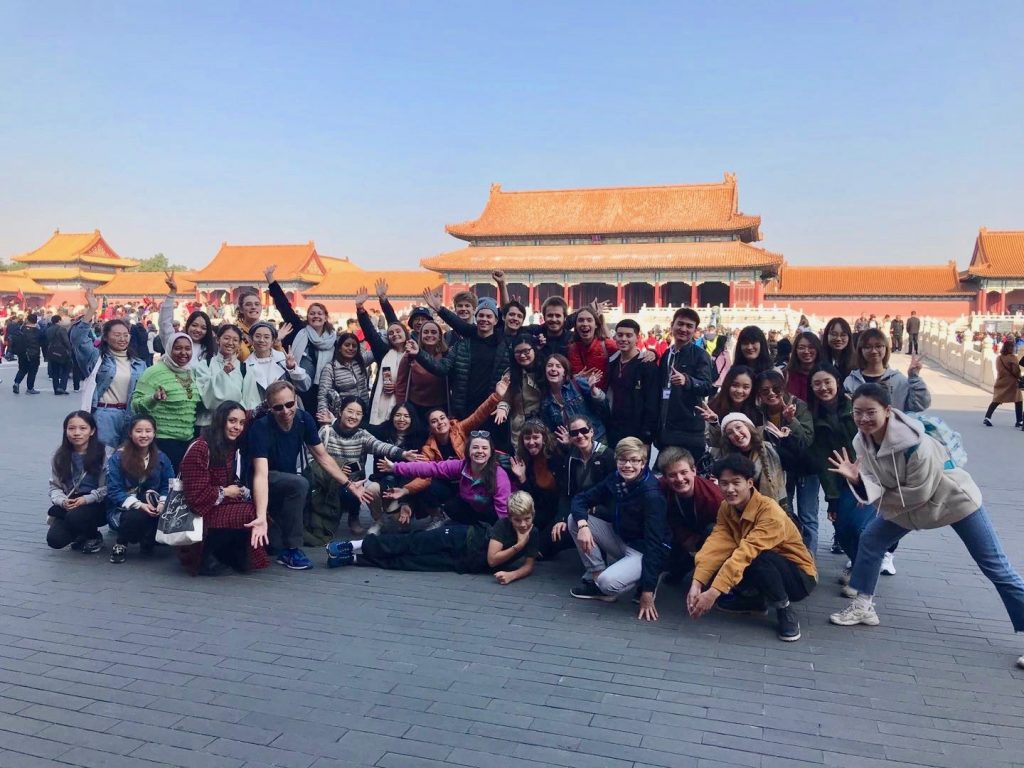A Spiritual Reawakening in China
大家好Hello everyone!
Most students have successfully unpacked their luggage and gotten a full load of laundry washed with the campus washing machines—we are putting the scrubba bags out of commission for the month. Overall, we are getting settled in with our routine at Capital Normal University, finding the local grocery store, Wu Mart, and exploring the city of Beijing. As expected, our routine was quickly interrupted with our first scheduled excursion away from the university to the eastern province of Shanxi.
On October 24 we woke up at the crack of dawn to get onto the bus at 5:45 am for a five hour ride to 大同Datong. We learned about the city’s transformation into a historical site from guest speaker Dr. Liu Peng the previous day. The lecture provided us with a foundational background of the area and its shift from coal land into a tourist destination. Though the documentary was informative, it also left a sad reminder of the costs of progress. As we left the city of Beijing, we could somewhat feel and see this transformation pass as the bus got closer to 大同Datong. Many of us had no expectations for our hotel or the city, but when we arrived at Datong hotel. We’re amazed by the statue garden, the hotel lobby, and the delicious meal at the hotel. During lunch, we were able to try a variety of specialty noodles from the area. With a full stomach and our bags in our room, we were ready to explore the city. Our first stop, Yangang Grottoes, contained a beautiful lake with many ducks. One of our Chinese CET program leaders bought a bag of finger-like fluffy chips that we threw into the water, and the ducks quickly followed to get the food. We quickly became friends and started to chat with them in Chinese and English; we thought they knew both languages.

Gathered at the base of the Grottoes, we learned about the history and recent renovations to the site. Yungang contains over 51,000 buddha statues of various sized from palm-size to ones that are over 40 feet tall. Some buddha statues are famous because of original coats of color from thousands of years ago. One rare color the tour guide shared is green from crushed up jade mixed into the clay used to coat the Buddha. Although there were hundreds if not thousands of Buddha’s at the Grottoes, you could see a story or lesson from each. Each contained amazing details with every inch of the space covered in paint, carvings, or offerings.

We finished the day with some light shopping at the side markets for souvenirs. Then we went back to our hotel for another massive dinner of local cuisines! It was a tiring day, but one worthwhile. We ended the night having deep conversations about our trip, watching synchronized diving on TV, or just relaxing in the comfortable beds.

Word of the day: Gratitude
The next day, we woke up early to have a breakfast buffet with many Chinese breakfast items from noodles to pastries and fruit. We had one and another serving of the delicious hot beverages (lattes, milk tea, cappuccinos) as we waited to check out of our room. We stopped at Huayan Temple and got some free time to explore the area. Some students decided to climb to the top of a pagoda to see the city. We were amazed by the sheer size of the temple and reminisce of the construction project from the documentary about the local mayor’s initiatives earlier in the week. Although Huayan Temple is a reconstruction of the original from the Liao and Jin dynasties, we could not stop to notice the massive size and detail in each relict and space. Afterward, we took an hour bus ride to a restaurant where we again had some fantastic food. We then went to the final site of our excursion, the Hanging Temple. Not only was this site unique because it hangs on the side of a cliff, but it is the only temple in which there are three religions to worship; Buddhism, Taoism, and Confucianism. It was pretty incredible standing up there and thinking of how such a place could be made and how religions can coexist in one place. During our journey back to campus, I could not stop reflecting on the process of revitalization of an area, such as the temples we visited. Could an area maintain its ancient beauty if we are changing and choosing what is deserving of our preservation?
Word(s) of the day: Spiritual Awakening
The next day was our free day in Beijing. We had a late start with many students sleeping in. Some went to 7 eleven to get the daily dose of caffeine while others went to the cafe for breakfast. At 10 am, we gathered in the lobby of our dorm to begin our adventures at the bargain shops called the Silk Trade Market. Many students were excited to try and use their newly-acquired bargaining skills. Some students had better outcomes than others, but we all were able to get what we needed. Then we went to the antique market where students were able to buy tea sets to jewelry, especially the jade products, which were of high demand. Finally, we ended the night with some people going to a Chinese Super League Soccer Game while others stayed back to relax and get to know each other better.
Word of the day: Deals
We met up with our Chinese CNU buddies for our visit to Tiananmen Square and the Forbidden City. The Forbidden City is a labyrinth of palaces build in the Ming and Qing Dynasty for the emperors and their families. The entire complex contained over 980 structures over a span of 180 acres. In contrast, Tiananmen Square was built in 1949 as a place for the gathering for the People’s Republic of China. Due to the massive size of these two sites, we separated into smaller groups where there were at least 2 Chinese buddies with 2-4 St. Olaf Student to explore the area. We moved around the Forbidden City, walking on the forts that protected the area and going into various buildings. There were many places to explore, and we were grateful to have our buddies as companies on this venture. Later that afternoon, all of the St. Olaf students had lunch at a restaurant with their Chinese buddies. Afterward, we went to Tiananmen Square and the surrounding shopping areas. Some people got unique gifts such as a smoke portrait while others had candy animals made. Overall, we had a tiring day of walking and exploring the city but loving every second of it.

Word of the Day: Decadence
As we have been in China for one week, we have been learning more about what is a modern China and the constant development of cities throughout the country in the Political Economy course. However, through our visits to 大同, the Forbidden City, and various other shopping and markets, the course content surrounded us and help to contextualizes our encounters. At various places in the city, I have been interacting with local workers with using mandarin from the cleaning staff at the dorm, to the security officers on the subway, and to the everyday people we meet; most are migrant workers from surrounding areas trying to make a better living to support their families. Thus, they are the backbones in helping to run and optimize the mega city daily. As through other parts of our program, the question of do we want the “local experience” or to be a tourist to help the economy has haunted my thoughts. Which will have a greater impact on the lives of local that we encounter?
— Meiyi Chen ’20
You must be logged in to post a comment.